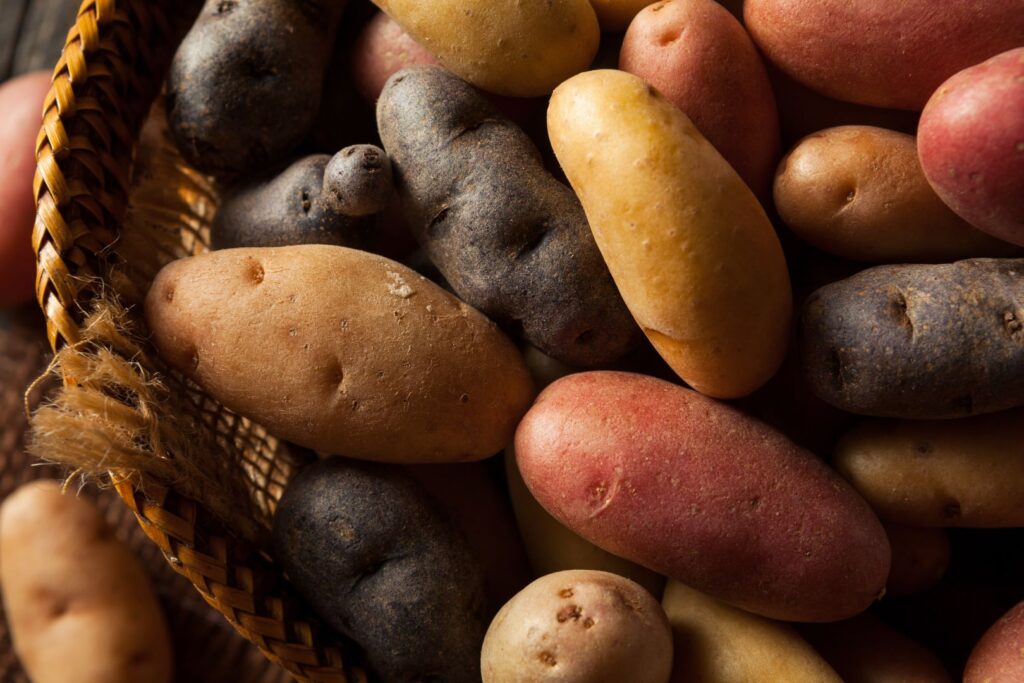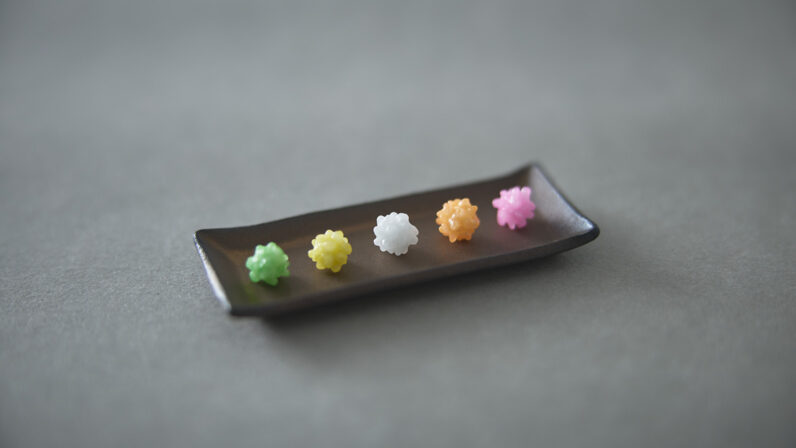The world of shochu is undergoing a transformation, evolving beyond the traditional sweet potato essence sought during the shochu boom. Now, in the present era of Reiwa, sweet potato shochu exudes vibrant aromas like tropical fruits and lychee, departing from typical sweet potato scents and defying expectations.

The rich array of aromas stems from the varieties of sweet potatoes used. Even now, the classic sweet potato known as Kogane Sengan remains a staple, but there are over 45 types, including red, purple, orange, and white, with new breeds continuing to emerge. Akin to savoring wine by the grape variety, it marks a new era of embracing the idea of appreciating sweet potato shochu based on sweet potato varieties.
Exploring the Sweet Potato Varieties
One standout in the realm of fragrance-based shochu is the Daiyame, a mature sweet potato shochu celebrated for its lychee aroma. Despite not using actual fruits, it garners high praise in international competitions for its expansive fruity essence. Also noteworthy are the Flamingo Orange, boasting a citrusy orange fragrance, and the delightful flavors of Sunny Cream, infused with hints of melon and banana.

When choosing shochu based on the sweet potato variety, it’s helpful to remember types by color. Red sweet potatoes like Beniharuka, Benimasari, and Benisatsuma offer a desserts-like sweetness. Orange sweet potatoes, such as Hamakomachi and Tamaakane, provide a vibrant nuance akin to black tea or mango. Purple sweet potatoes like Ayamurasaki carry fragrances reminiscent of yogurt or red wine. Lastly, white sweet potatoes like Joy White and Daichinoyume bring forth a refreshing scent of flowers or citrus, serving as hints when exploring new flavors.
■ Recommendations by Sweet Potato Variety
Red Sweet Potato : Hozan Beniazuma, Kinpo Kinko, Satsuma no Homare Kurenai Satsuma
Orange Sweet Potato : Senbonzakura, Jukusei Hamakomachi, Isa Komachi, Ouka Tamaakane
Purple Sweet Potato : Kujira no Bottle Ayamurasaki Kurokoji, Hozan Ayamurasaki, Akaimo Jikomi Imo Shochu – Akarui Nousan
White Sweet Potato : Tengu Zakura Joy White, Osuzuyama Yamaneko, Ganko Shochu-ya
Versatile Shochu with Aromas that Transform Based on the Serving Method.
Entering the shochu market as a driving force behind the shochu boom and cherished by many fans is Seikou Udoku. The new release, Seikou Udoku XX Joy White, opts for the Joy White sweet potato. While the previous Seikou Udoku offerings commonly used Kogane Sengan, the choice to move away from the traditional variety is a strategic move to avoid the sweet potato rotting disease known in Japanese as Motokusare, which is currently affecting the shochu industry.
Since the shochu boom in 2000, there has been a sense of urgency to bring innovation to the slowing shochu industry. Sata Souji, the representative of Sata Souji Shouten, explained how there was a need to innovate and create something new. This product introduces a fresh perspective by selecting sweet potatoes that haven’t been utilized before, and its design embraces a vibrant, pop style. Sata Souji Shouten has a track record of creating diverse alcoholic beverages, including craft gin and spirits infused with sansho pepper. This new release introduces a new dimension to the world of shochu, highlighting the aromatic compound linalool found in flowers.

In addition to the traditional hot or cool water mix, the fragrance-based shochu goes exceptionally well in highball concoctions with soda. Also, similar to whiskey, it is delightful when enjoyed on the rocks in a glass. In the case of Seikou Udoku XX Joy White, drinking it straight or on the rocks reveals a fresh sweetness reminiscent of pear, while mixing it with carbonated water unveils a vibrant aroma akin to linalool-based muscat. When mixed with hot water, it offers a pleasantly light and pillowy flavor similar to roasted sweet potatoes. The flavors, evolving with temperature and serving styles, vividly redefine the possibilities of mixing, creating new ways to enjoy Shochu.
Each variety has its own aromatic profile, adding another layer to gastronomic pairing. Exploring the diverse range allows for versatile pairings such as matching white sweet potato shochu with Italian appetizers and opting for orange sweet potato shochu when enjoying ethnic cuisine.
The world of shochu is undergoing a transformation. Embrace the colorful realm of NEW SHOCHU and savor the experience with all five senses.













